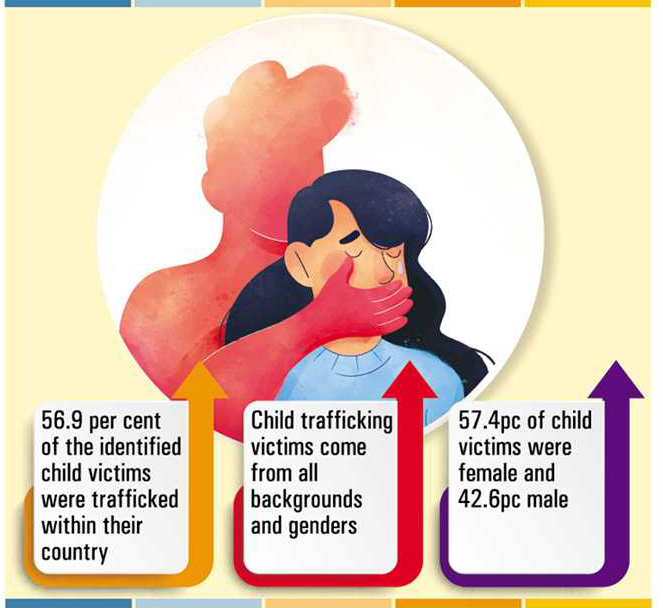FE REPORT
Most child trafficking incidents occur within the country of origin where friends and family are involved in some way, says a new global report of the International Organization for Migration (IOM).
According to the report, over 56.9 per cent of the identified child victims had been trafficked within their country.
On the other hand, more than 51 per cent of child victims reported involvement of friends and family in their recruitment into trafficking.
Family and friends play an important role in the recruitment of children in countries where either widespread or localised extreme poverty is common.
Child victims trafficked for sexual exploitation were more likely to be trafficked internationally, while child victims trafficked for forced labour were more likely to be trafficked domestically.
Those from countries at higher risk of disaster and climate change vulnerability had 1.12 times the odds of being trafficked as children compared to adults, but when there was a disaster, child victims had a higher chance of being trafficked domestically rather than internationally.
The report titled: From Evidence to Action: Twenty Years of IOM Child Trafficking Data to Inform Policy and Programming found in cases of international trafficking, child victims were mostly trafficked to neighbouring, wealthier countries, with a smaller number being trafficked to distant wealthy regions.
It was produced through collaboration between the IOM and the François-Xavier Bagnoud Center for Health and Human Rights at Harvard University (FXB), using the IOM Victimsof Trafficking Database (VoTD).

It contains primary data collected from approximately 69,000 victims of human trafficking of 156 nationalities, trafficked in 186 countries, who were registered with IOM in 113 countries where IOM operates.
According to the analysis, false promises were the most common means of control reported by children (58.9 per cent), followed by psychological and physical abuse (56.3 per cent and 50.6 per cent, respectively).
Use of threats against the victims (39.5 per cent) as well as use of excessive working hours to control them (36.5 per cent) were also reported by a sizeable share of child victims.
The analysis confirms that child trafficking victims come from all backgrounds and genders. According to the data set, 57.4 per cent of child victims were female and 42.6 per cent male.
Child victims range from 0 to 17 years old. Based on the age reported at the time of IOM registration, children aged 13-17 formed the largest group of child victims (46.6 per cent).
Child victims reported being exploited in domestic work (14.5 per cent), begging (10.2 per cent), hospitality (3.4 per cent) and agriculture (3.3 per cent).
Males had 1.99 times the odds of being trafficked as children compared to females. Males also had 1.55 times the odds of being exploited for labour as a child rather than as an adult when compared to females.
arafataradhaka@gmail.com